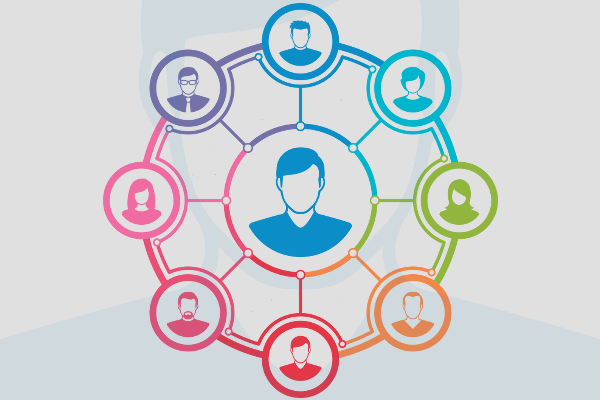Identifying Your Archetype
by Paul Chek

 As a therapist, it’s my job to trace my patients’ symptoms back to their true cause so that I can coach them to health.
As a therapist, it’s my job to trace my patients’ symptoms back to their true cause so that I can coach them to health.
Over the more than 32 years of my practice, I’ve seen time and time again that those deep causes often come down to a client living contrary to their values… setting aside their life’s dreams… and avoiding the pull of their archetypes.
In fact, I’ve seen countless clients with back pain, digestive and eliminative issues, skin problems, headaches, anxiety, depression and a myriad of other symptoms resulting from them avoiding the pull of their archetype.
- What is an archetype?
- What is your archetype?
- How can avoiding your archetype’s pull cause harm?
Knowing the answers to those three questions can be hugely valuable to your health and help your clients reach their health goals as well.
In this article, I’m going to answer each of these three questions, but let’s take #1 and #3 first.
What is an archetype?
In a nutshell, your archetype encapsulates the way you desire to express yourself. It is the greatest source of motivation to express yourself creatively, and it is the pathway to the true realization of your authentic self.
But there’s another dimension to an archetype beyond this one. An archetype is a kind of pattern or original idea from which an unlimited number of variations can emerge.
Think of it like this: Within one family, you may have one person whose dream is to be a carpenter, another whose dream is to be a plumber, another whose dream is to be an electrician, and a father who is a stonemason. Although each of these dreams seems to be unique, they are all expressions of “The Builder” archetype.
So there is a common drive beneath the dreams of the carpenter, plumber, and electrician that manifests in different ways.
That drive, or calling, is an archetype.
Archetypes trigger a distinct emotional charge that engages us on many levels; you are likely to find yourself constantly thinking about what you’d love to do. When an archetypal attraction is in play, if you even hear people talking about what you are drawn to, you can’t help but listen. If you stand in front of a magazine rack, you are very likely to be drawn to read magazines and look at photos of others doing what you are being called to do.
How can avoiding your archetype’s pull cause you harm?
When you are acting from and in harmony with your dominant archetype, you are engaging in a labor of love. We all know from life experience that a labor of love is sustainable, even in the face of challenges.
But labor without love produces inner challenges and symptoms.
The pull of an archetype can be so strong that the longer you put off engaging the archetype, the more physical, emotional and mental discomfort you begin to feel. You can even begin to feel like you’re dying inside.
It’s the pull of an archetype that explains why two people – perhaps with the same skills and abilities – could have the polar opposite reactions to a job or a task. One might find being an electrician a joy while the other sees it as incredibly stressful.
The person who finds it stressful and unfulfilling is being called to a different labor of love.
Now steep that person in stress for years at a time and you know what happens – back pain, poor digestion, depression and all of the symptoms we described above.
And none of that is going to go away in the long term unless that person understands what their archetype is and begins to align their life with it.
What is your archetype?
 There are several simple ways to identify what archetype is calling you at any given time in your life. And, yes, our archetypes do change from time to time.
There are several simple ways to identify what archetype is calling you at any given time in your life. And, yes, our archetypes do change from time to time.
When we are ready to transition from one working archetype to another, typically, we start feeling a sense of the mundane with the old archetypal activity. The love and inspiration that was once there seems to have gone flat. This usually indicates that we have satiated that archetype.
By answering the following questions, you are much more likely to realize what archetype is calling you now:
1) What do you spend your money on?
Aside from the essentials of survival, such as the expenses of food, shelter and transportation, what do you spend money on because you feel good when you do? I encourage people to look at all of their receipts. There, you may find that you are spending a lot of money on magazine subscriptions, books, videos, courses or other things related to the archetype that is activated in you.
2) What are your primary activities and interests?
When an archetype is activated within your psyche, there will be activities and interests that you do habitually, but don’t necessarily leave you feeling fulfilled. When searching for your archetype, look for the activities that give you that sense of “Ah, that was fun!” or “I can’t wait to do that again.”
3) What do you spend your time doing or wishing you were doing?
This question is best answered by asking yourself, “If I were to be sentenced to prison for 30 years and forced to work every day, what activity would allow me to forget I was in jail because I’d feel so fulfilled?”
4) What images, interests and experiences trigger an emotional charge?
Whenever an archetype is activated, any engagement with the subject or activity triggers strong emotional movement in us. We feel drawn to it. What is it that you do, or dream of doing that gives you a deep sense of fulfillment?
5) What is calling to you at this time in your life?
Archetypal activation can literally be felt as a voice in our head or in our heart saying, “This is how you can feel whole now.” What is it that is calling you forth to create that sense of satiation or wholeness within you at this time in your life?
Here’s an example.
All mothers are expressions of the mother archetype. Therefore, if you have a deep desire to be a mother, you are experiencing the attractive force of the mother archetype. Just ask any woman who has avoided the call of the mother archetype what happens within themselves and the challenges that arise with their partner if they don’t feel supported in their need to engage their archetype and you can begin to see how powerful an archetypal attraction can be.
Tips For Effectively Fulfilling Your Archetype
An activated archetype should be engaged in as your dream.
But sometimes, the pull of your archetype can be so strong that you suffer what is called archetypal possession. The obsession with fulfilling an archetype in this case often means the person is so fixated on fulfilling their archetypal urges that they (often unconsciously) begin neglecting responsibilities to family, friends and work. Just as one can be addicted to alcohol, one with an archetypal possession behaves as though he or she is addicted. The result is almost always a breakdown of key relationships among the people who represent their dream team
So what’s the best way to fulfill your archetype once you’ve discovered it?
10 Components of an Archetypally Inspired Dream
I have identified 10 components that are essential to the fulfillment of a dream driven by the deep desire to fulfill an archetype (1):
- The dream or archetype must be clearly defined.
- Purpose: What purpose does your dream fulfill?
- People: Whom do you want to create with?
- Income needs: How much do you need?
- Passion: What are you passionate about?
- Geography: Where do you want to be?
- Dream affirmative values: When to say “yes” or “no.”
- Responsibility: How much responsibility do you want?
- Working Conditions: What is your specific working/creative environment like?
- Feeling good: What is it about this particular dream that makes you feel good?
Conclusion
Archetypes represent the overall classification of activities related to your dream. By paying attention to your dreams, daydreams, what you spend your money on, and what gives you an emotional charge and a sense of satisfaction you can’t get with other activities, you can effectively identify your current working archetype.
By addressing the 10 components of a dream effectively, you can fulfill your archetype most efficiently. Not only does that mean you are MUCH more likely to be healthy – your life isn’t overburdened with stresses – but the fulfillment of an archetype helps you become more of who you are, and allows you to spend much more of your time living in love.
References
- PPS Success Mastery Lesson 1. How To Find And Live Your Legacy
www.ppssuccess.com
If you want to learn much more about archetypes and factors essential to effectively coaching people (or working with them in the role of a therapist, doctor, caregiver or teacher), I invite you to enroll in my CHEK 4 Quadrant Coaching Mastery online course.


